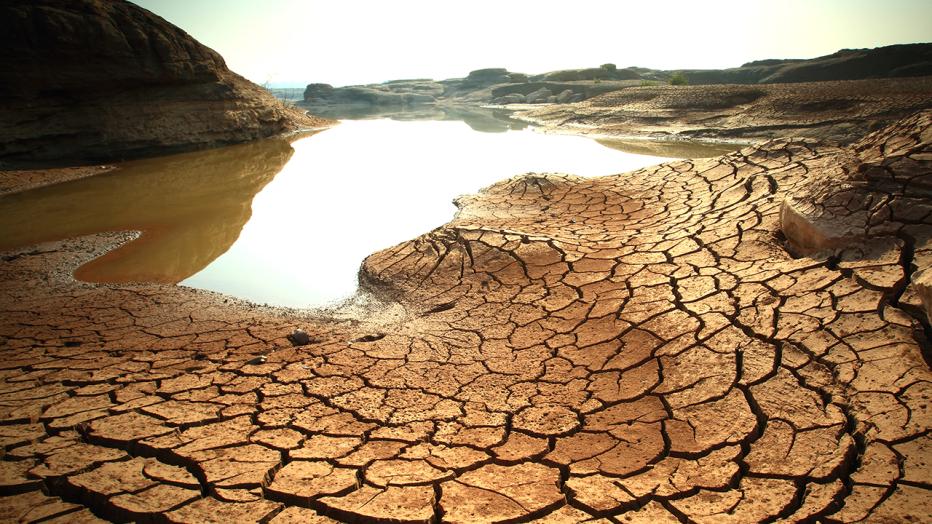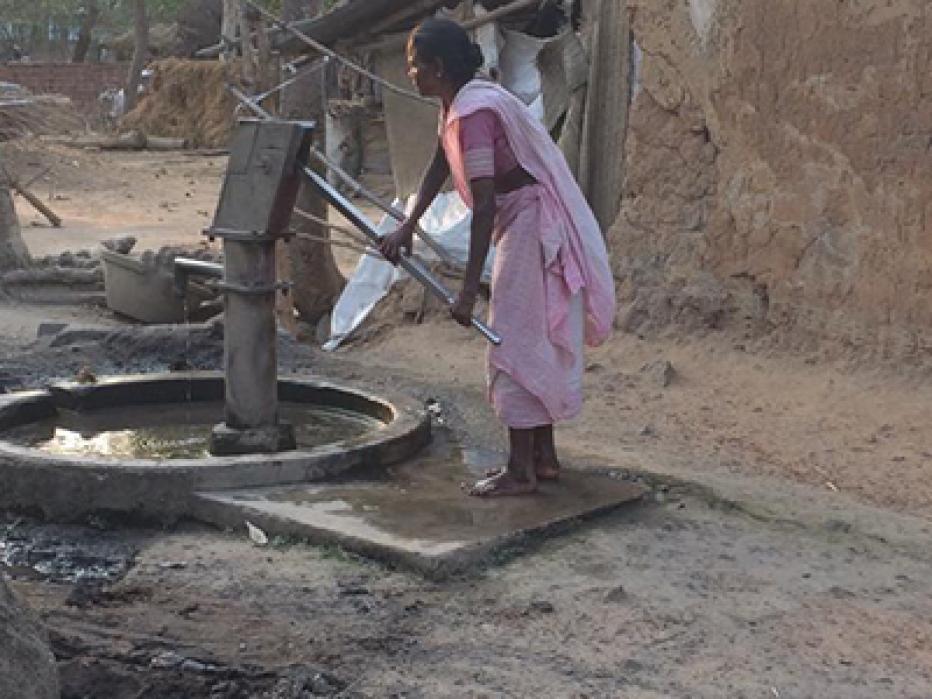
As a civil engineer specialized in water resources management and working in water treatment, Jacobs Rajat Chakraborti’s experience solving water-related problems globally, as well as his own experiences living in the country helped him realize that India needs to take drastic steps to alleviate its acute water shortage before it becomes a catastrophic phenomenon.
“With the uncontrolled population growth leading to high water demand, gradual depletion of groundwater table, poor water quality, historical less rainfall, prolonged summer and deteriorated infrastructure, I’ve witnessed firsthand gradual shortage of potable and non-potable water use – and now – severe water shortages in India,” Rajat says.
Due to high levels of manganese, iron and minerals, he’s seen colored tap water, which is unmetered and unfortunately largely wasted. Water pumped from groundwater through deep well, as reflected in the photo, often contain high levels of arsenic and metals, but millions of people in India, particularly those living in rural locations, consume this water for drinking purposes as it is their single water source, he shares.
And then there’s the pungent smell of chlorine in the drinking water that’s unpleasant and unhealthy, but, again, he adds, people have no option other than drinking from the tap.

Millions of people in India depend on water pumped from groundwater through deep well as their single source of water.
Globally, approximately 2.1 billion people lack access to clean, safe water. In India, the crisis is particularly difficult. “Some 600 million people – about half the population – face high to extreme water scarcity conditions, with about 200,000 dying every year from inadequate access to safe water. By 2030, the country’s demand for water is likely to be twice the available supply,” Rajat wrote in a recent article published in the Journal of American Water Works Association.
“If India can’t offset future water demands, its agricultural, industrial, and domestic water users will likely face increasingly frequent and more severe water shortages,” Rajat warned in the article, entitled “Water Shortage Challenges and a Way Forward in India.”
It’s a challenging task, he admits, but any step towards the right direction will help India achieve the goal of supplying clean water to its population before it is too late. Rajat and co-authors, Jacobs’ Jagjit Kaur and Harpreet Kaur, faculty of the Department of Science, DAV College in Hoshiarpur, Punjab, India, highlight several steps to guide a path forward to a more secure Indian water future, including:
Smart planning and proactive improvements – Towns and cities throughout India run into increased water issues during summer months because of the lack of reliable surface water systems and infrastructure, leaving groundwater as the only feasible source, which as Rajat noted above, isn’t always safe or pleasant. With better distribution systems, these issues could be improved and mitigated, and precious water resources can be better conserved and managed.
Green and grey infrastructure solutions offer another way for India to bolster its water supply, according to Rajat. Natural and green solutions offer a suite of services to people that can complement, or in some cases replace conventional infrastructure. For example, healthy oyster and coral reefs can help protect coastlines from wave damage and erosion; wetlands help process pollutants and protect against flooding; and urban trees and green spaces can filter stormwater, reduce flooding and improve air quality.
In India, the article encouraged a One Water approach – that all water, no matter the source is valuable – and highlighted capturing stormwater runoff as a green infrastructure approach to enhancing water availability, improving water quality and reducing risks associated with water-related disasters. The authors also encouraged governments and organizations to consider measures to recharge aquifers by infiltrating or injecting treated surface water into the underground aquifers – like what Jacobs and the Hampton Roads Sanitation District are doing in the U.S. with the Sustainable Water Initiative for Tomorrow.
Rajat says, with 20 planned smart cities in India – including work related to Jacobs’ own partnership with Aurangabad Industrial Township Limited – aimed at comprehensive development, they are already making steps in a more sustainable direction. The all-inclusive development includes: institutional, physical, social, and economic infrastructure to reduce congestion, air pollution and resource depletion; boost local economies; promote interactions; build computer-aided efficient transport systems and water infrastructure; and ensure security.
A holistic, collaborative approach to tackling issues – “India needs to work holistically with its neighbors and global partners to address climate change and its impact on regional water scarcity,” the article states. A collaborative approach also depends on governments partnering with the private sector to develop and implement smart and sustainable solutions, such as the award-winning work we led with the Bangalore Water Supply and Sewerage Board to guide infrastructure investment and asset management for the next 30+ years, and support the utility to withstand the future water challenges in a sustainable manner. The plan will play a vital role in supporting ongoing economic growth in the region and securing its position as an attractive, vibrant, modern and livable city of the future.
Ultimately, Rajat says, “Better management of water systems with blended green and gray infrastructure solutions and the restoration and protection of water resources are the keys to India’s socioeconomic development going forward. This will create a sustainable safe water supply for the current and future people of India unlike what I experienced.”












































